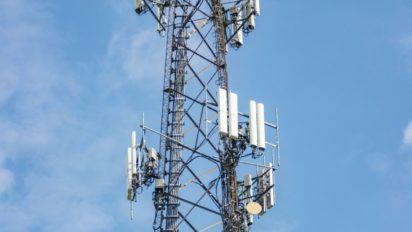For years, satellite internet has won the reputation of being a pricey, slow, last resort for internet. However, as fast satellite internet technology continues to improve, that’s no longer the case.
With the launch of more advanced, low Earth orbit (LEO) satellites, previous shortcomings of satellite internet — slow speeds, high latency and high pricing — are likely soon to be frustrations of the past.
Satellite internet already outperforms dial-up and some DSL services, but emerging technologies could bring satellite internet up to par with cable or fiber internet capabilities.
Improved satellite internet service will have greater impact on those who live in rural areas where cable or fiber-optic is not available. Cable internet covers about 89% of the U.S. while fiber is available to only about 42%, according to the Federal Communications Commission (FCC), indicating that millions of Americans are likely underserved when it comes to broadband. Instead of being the “last resort” for an internet connection, satellite internet is quickly becoming an internet option as viable as DSL, cable or fiber.
Is satellite internet a good option?
Currently, satellite internet is a great option for residents of rural or suburban areas. Along with basically unlimited availability, satellite internet also offers Wi-Fi connectivity and speeds fast enough for streaming services, such as Netflix.
Benefits of satellite internet
- Unmatched availability – Satellite internet is available to virtually anyone with a clear view of the southern sky
- No phone line required – You don’t need to have home phone service for internet
- (Relatively) fast speeds – With speeds up to 25 Mbps, and in some areas up to 100 Mbps, satellite internet is comparable to and faster than most DSL services, and significantly faster than dial-up
- Home Wi-Fi is possible – Routers are available to rent from HughesNet and Viasat, so you can enjoy home Wi-Fi
Current limitations of satellite internet
- Low speeds – Satellite internet currently cannot deliver the max speeds or speed consistency that comes with cable or fiber-optic internet
- Low monthly data allowances – There’s less bandwidth to go around with satellite internet, so providers place comparatively strict limits on monthly data usage
- High ping – The time it takes for internet signals to go back and forth from the satellite to the home dish makes for high ping, making online gaming all but impossible
- High price – Satellites, equipment and operating costs are pricey, and those costs, unfortunately, get passed down to consumers, resulting in higher service prices than other internet types
LEO satellites may be the solution to satellite internet shortcomings
High-tech, low-flying satellites, and lots of them, could be the answer to current problems with satellite internet service. With this technology, satellite internet providers could retain the benefits of satellite internet while eliminating, or at least reducing, the problems that have historically come with it.
Companies including Starlink, OneWeb, Boeing and Telesat are investing heavily into LEO satellites, aiming to launch thousands of low-orbiting satellites in coming years. Starlink began launching batches of satellites last year, but no service details or internet plan options have been released to date.
In order to launch so many satellites, Starlink will make use of its reusable rockets, which can carry up to three satellites per launch. Furthermore, OneWeb claims automation will enable them to manufacture up to three satellites per day, at a cost of only about $1 million per satellite whereas a normal single communications satellite could cost as much as $150 million. Lower initial and ongoing operating costs could help lower the price of satellite internet for consumers.
These new satellites will be capable of delivering speeds rivaling other connection types, and their lower proximity to Earth will minimize latency issues.
What else can customers expect from the new technologies? Possibly smaller receiver devices (satellite dishes) that do not require special installation or calibrating. Ideally, users would be able to self-install their receiver, an added convenience to an already improved service.
Will satellites make high-speed internet available worldwide?
Quite possibly. Satellite internet is far more capable than cable or fiber of reaching remote locations. With thousands of satellites orbiting the globe, rural areas and developing countries all over the world could have access to broadband internet.
Satellite internet advancements are good news not only for rural or remote areas with little access to internet options, but for internet subscribers everywhere, including large urban areas.
If satellite internet can deliver faster speeds and lower latency, it could become as appealing as cable or fiber, no matter the market. At the very least, the added competition could result in better pricing or service quality from cable and fiber-optic internet providers.
Thinking about satellite internet for your home?
Satellite internet is arguably advancing faster than any other internet service type. If you’re interested in satellite internet for your home, or simply want to learn more about your options and what speeds and pricing you can get with satellite internet, rely on Allconnect, your experts for all things internet.
Written by:
David AndersSenior Writer, Broadband Content
David joined the Allconnect team in 2017, specializing in broadband and TV content. His work has been referenced by a variety of sources, including ArcGIS, DIRECTV and more. As a Senior Writer, David is motivate…
Read more
Edited by:
Trey PaulEditor, Broadband Content
Related pages
-
Featured
![DISH’s purchase of Boost Mobile puts it one step closer to its 5G dreams]() DISH’s purchase of Boost Mobile puts it one step closer to its 5G dreams Joe Supan — 4 min read
DISH’s purchase of Boost Mobile puts it one step closer to its 5G dreams Joe Supan — 4 min read -
Featured
![30% of Americans say their internet is too slow. Here’s how to fix it]() 30% of Americans say their internet is too slow. Here’s how to fix it Joe Supan — 4 min read
30% of Americans say their internet is too slow. Here’s how to fix it Joe Supan — 4 min read -
Featured
![Want to try out Starlink? You may have to wait until “late 2022 to early 2023”]() Want to try out Starlink? You may have to wait until “late 2022 to early 2023” Joe Supan — 2 min read
Want to try out Starlink? You may have to wait until “late 2022 to early 2023” Joe Supan — 2 min read
Latest
-
Tuesday, April 23, 2024
Worried about losing your TV signal? This is how to keep your satellite dish cleanDavid Anders — 6 min read
-
Tuesday, April 23, 2024
How to change your Wi-Fi network passwordCamryn Smith — 2 min read
-
Tuesday, April 23, 2024
Why your internet bill might increaseAri Howard — 2 min read





